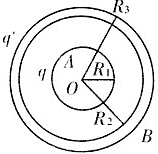 题目内容
(请给出正确答案)
题目内容
(请给出正确答案)
F. A. Q. means the quality of the product offered is equal to the average quality of the current gro
 如果结果不匹配,请 联系老师 获取答案
如果结果不匹配,请 联系老师 获取答案
 题目内容
(请给出正确答案)
题目内容
(请给出正确答案)
 如果结果不匹配,请 联系老师 获取答案
如果结果不匹配,请 联系老师 获取答案
 更多“F. A. Q. means the quality of …”相关的问题
更多“F. A. Q. means the quality of …”相关的问题
A.其他货币资金
B.营业外收入
C.盈余公积
D.应收账款
E.资本公积
F.预付账款
G.本年利润
H.坏账准备
I.主营业务收入
J.材料成本差异
K.销售费用
L.营业税金及附加
M.委托加工物资
N.其他业务成本
O.财务费用
P.累计摊销
Q.营业外支出
R.预收账款
S.固定资产清理
T.实收资本
U.所得税费用
V.制造费用
W.其他业务收入
X.利润分配
In 1906 the psychologist, Alfred Binet, devised the standard in relation to which intelligence has since been assessed. Binet was asked to find a method of selecting all children in the schools of Paris who should be taken out of ordinary classes and put in special classes for defectives. The problem brought home to him the need for a standard of intelligence, and he hit upon the very simple concept of" mental age".
First, he invented a variety of tests and put large numbers of children of different ages through them. He then found at what age each test was passed by the average child. Binet arranged the various tests in order of difficulty, and used them as a scale by which he could measure every individual. If, for example, a boy aged twelve could only do tests that were passed by the average boy of nine, Binet held that he was three years below average, and that he had a mental age of nine.
The concept of mental age provided Binet, and through him, other psychologists with the required standard. It enabled him to state scores in intelligence tests m terms of norm. At first, it was usual to express the result of a test by the difference between the" mental" and the" chronological" age. Then the boy in the example given would be" three years retarded". Soon, however, the" mental ratio" was introduced; that is to say, the ratio of the mental age to the chronological age. Thus a boy of twelve with mental age of nine has a mental ratio of 0.75.
The mental age was replaced by the intelligence quotient or" I. Q". Clearly, since the mental age of the average child is equal to the chronological age, the average I. Q. is 100.
To judge a child's standard, his marks in a test must be compared with marks gained by ______.
A.others of the same age
B.older children
C.younger children
D.adults
A. 与电荷q.电压U有关的正实常数
B. 与电荷q有关:与电压无关的正实常数
C. 与电荷q电压U有关的正实常数
D. 与电荷q无关:与电压U有关的正实常数
 又有人说,因为f=qE,所以
又有人说,因为f=qE,所以 试问这两种说法对吗?为什么?f到底应等于多少?
试问这两种说法对吗?为什么?f到底应等于多少?
如图,AB=2l,OCD是以B点为圆心,l为半径的半圆.A点有正电荷+q,B点有负电荷-q.(1)将单位正电荷从O点沿弧OCD移到D点,电场力对它做了多少功?(2)把单位负电荷从D到AB的延长线移到无穷远处,电场力对它做了多少功?
半径为R1的导体球A,带有电量q,球外有一内外半径分别为R2、R3的同心导体球壳B,球壳上带有电量Q.求
(1)整个带电体系电荷的分布,场强的分布以及A、B导体的电势及电势差.再分别求下列3种情况.
(2)若将导体球A与导体球壳B用导线连接,重新计算(1)中的问题.
(3)若将导体球壳B接地,重新计算(1)中的问题.
(4)若将导体球A接地,重新计算(1)中的问题.

In 1906 the psychologist, Alfred Binet(1857—1911), devised the standard in relation to which intelligence has since been assessed. Binet was asked to find a method of selecting all children in the schools of Paris who should be taken out of ordinary classes and put in special classes for defectives. The problem brought home to him the need for a atandard of intelligence, and he hit upon the very simple concept of "mental age".
First of all, he invented a variety of tests and put large numbers of children of different ages through them. He then found at what age each test was passed by the average child. For instance, he found that the average child of seven could count backwards from 20 to 1 and the average child of three could repeat the sentence: "We are going to have a good time in the country." Binet arranged the various tests in order of difficulty, and used them as a scale against which he could measure every individual. If, for example, a boy aged twelve could only do tests that were passed by the average boy of nine, Binet held that he was three years below ave rage, and that he had a mental age of nine.
The concept of mental age provided Binet, and through him, other psychologists, with the required standard. It enabled him to state scores in intelligence tests in terms of a norm. At first, it was usual to express the result of a test by the difference between the "mental" and the "chronological" age. Then the boy in the example given would be "three years retarded". Soon, however, the "mental ratio" was introduced; that is to say, the ratio of the mental age to the chronological age. Thus a boy of twelve with a mental age of nine has a mental ratio of 0.75.
The mental age was replaced by the "intelligence quotient" or "I. Q. '. The "I. Q." is the mental ratio multiplied by 100. For example, a boy of twelve with a mental age of nine has an "I. Q." of 75. Clearly, since the mental age of the average child is equal to the chronological age, the average 'I. Q.' is 100.
In order to judge a child' s intelligence, his marks in a test must be compared with marks gained by
A.thirteen-year-old children
B.children of different ages
C.the same child at different ages
D.other children of the same age